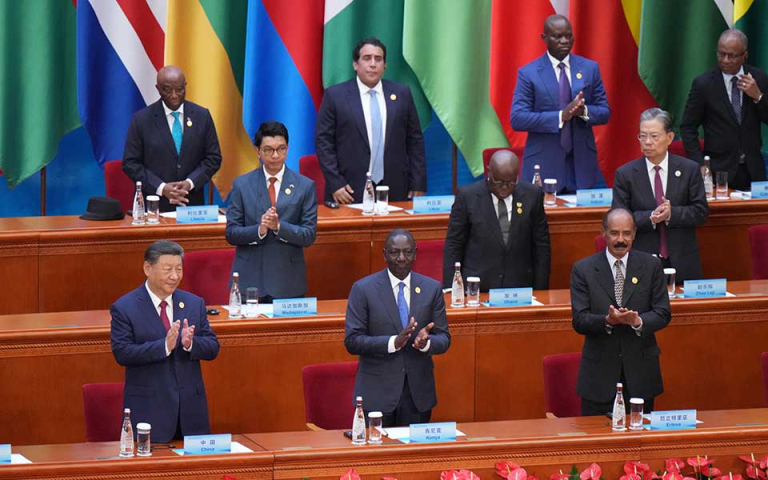By Anika Patel
New data reveals a rebound in Chinese financing of renewable energy projects in Africa in 2023, following a lull over the past few years.
Climate cooperation between China and Africa was a key focus of the Forum on China-Africa Cooperation (FOCAC), which concluded on 6 September, when dozens of leaders gathered in Beijing for the three-yearly meeting.
A landmark declaration was issued at the previous FOCAC, held in 2021, that “positioned climate cooperation as an important pillar” of future cooperation. The same year, the Chinese government declared that it would stop funding coal power.
A pause in policy bank loans for energy projects had raised concerns around the future of Chinese energy lending in Africa. However, the new data indicates that the pause signified a reset, as banks adjusted to requirements to fund low-carbon energy and “small and beautiful” projects, according to the Boston University Global Development Policy Center.
This article examines the shift, and explores the challenges for Chinese financing of the future buildout of renewable energy on the continent.
‘Established’ Interests
China has been a significant financier of energy projects in Africa, especially of fossil fuel projects. Some 75% of the continent’s electricity comes from fossil fuels, although it accounts for less than 3% of the world’s energy-related carbon dioxide emissions and has the lowest electrification rate of all inhabited continents.
In the past, the bulk of Chinese financing had been driven by the backing of China’s two policy banks – the Export-Import Bank of China (EXIM) and the China Development Bank (CDB) – and directed particularly towards coal-fired power plants.
The two banks had issued $182bn in loans across Africa, primarily into the energy sector. According to the Boston University Global Development Policy Center, between 2000 and 2023, 15% of the policy banks’ total loans by value went to fossil fuels and 12% to hydropower plants.
By contrast, less than 1% of loans by value were issued for solar, wind or geothermal projects.
This is largely due to the established networks between China’s state funders and state-owned enterprises (SOEs). Historically, most SOEs have focused on conventional power, such as coal and hydropower, according to the China-Global South Project.
Dr Frangton Chiyemura, lecturer in international development education at the Open University, tells Carbon Brief that China’s international development activity in the 2000s and 2010s reflected the country’s own “internal development trajectories” at the time, as China had also developed a coal-dominated power system that featured hydropower as the largest low-carbon source.
The majority of energy project developers, mainly SOEs, in Africa during this “going out” period held expertise in hydropower and coal, leading to a greater number…
Read More: China’s Finance for African Renewables Rebounds After Two-Year Lull – The



